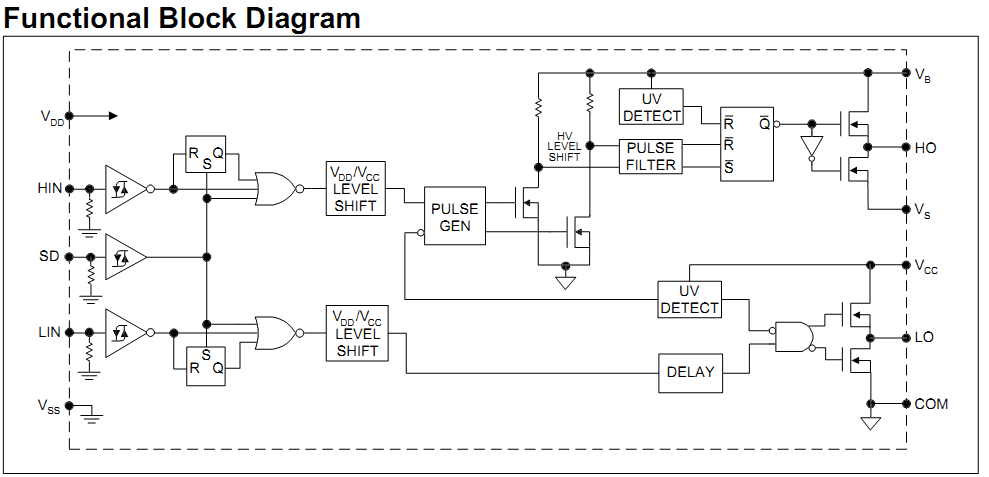atifsheikh_91
Member level 1




VDD should be the logic level of input. If its a MCU then VDD is +5V...For using higher side of ir2110 u should connect a bootstrap capacitor,, and that capacitor charges only during low side gate is on.
Hope this will be helpful. I had the same issue.



Connect COM to GND. HO goes to the MOSFET.
Connect COM to GND. HO goes to the MOSFET.
But later, you go on to ask:How can I use only the lower side of IR2110?
what should be the value of VDD of IR2110 if the Power Rail of Transistors is 220VDC ? (in Half_bridge)
You should have a +12V or +15V or some kind of auxiliary supply for driving the MOSFET. This is the voltage to be connected to VCC.
---------- Post added at 22:06 ---------- Previous post was at 22:05 ----------
Question:
Do you need to use only low-side or both high-side and low-side? You ask:
But later, you go on to ask:
In a half-bridge converter, you would need to use both high-side and low-side drive.
We use cookies and similar technologies for the following purposes:
Do you accept cookies and these technologies?
We use cookies and similar technologies for the following purposes:
Do you accept cookies and these technologies?
